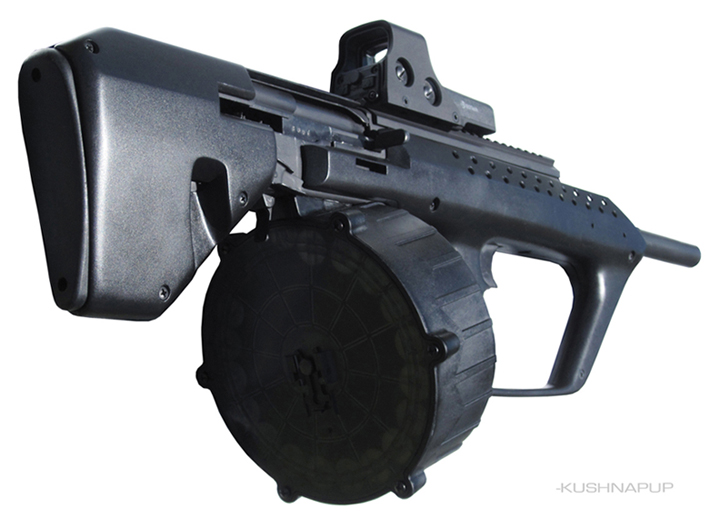Ask any general worth his salt and he will list logistics as one of the most fundamentally important things that determine the outcome of wars, especially amongst peers and near peers.
Just because some people do not like it does not change that fundamental reality of warfare.
It is that factor which the PLA high command has firmly in mind when they are resisting fancy optics, especially red dots, holographics and the like which become expensive paperweights if the battery runs out.
Without back up irons, your fancy rail-covered gun also becomes a paperweight.
Even back during Iraqi Freedom, with all its advantages of free, unchallenged naval and air supply routes, friendly neighbouring bases and countless other overwhelming advantages, US and allied forces were still surfering very serious, and at times, potentially crippling logistical bottlenecks.
The PLA knows from bitter experience how crippling logistical shortcomings can be to an entire campaign or war, which is why the 95 family is designed to try and ease that logistical burden as much as possible.
The shared ammo and parts amongst the family of guns means fewer types of parts and munitions need to be supplied, and troopers could easily share out supplies to ensure every member of the fire team stays at peak combat efficiency instead of having members reduced to using side arms if they use a different ammo type to the rest of the squad and that particular ammo type wasn't amongst the latest resupply.
The insistence on reliability characteristics that would make 'modern' western guns cry is so replacement weapons for worn out guns almost never happens out in the field.
The great reluctance to switch to optics and insistence on keeping the iron backups is from the knowledge that once you start issuing optics, especially if you remove irons to do so, batteries become a critical logistical requirement on top of food, water, ammunition and medical supplies.
Not only is the reliance of battery operated optics a logistical burden, it's also a tactical and strategic vulnerability.
Militaries spend a great deal to ensure all their key electronics are EMP hardened. But the batteries they use in their sights are just your bog standard garden variety.
Against rag tag insurgents its a non-issue, but against a top technical opponent, you run the risk they will let rip with tactical EMP weapons during key engagements, and suddenly, your entire frontline ground troops' fancy red dots and holographics goes bye-bye. With many modern western frontline rifles not even having flip up irons back ups as standard, that's almost asking for a turkey-shoot.
That's why you will never see PLA troops adopt red dots and holographics en mass.
The odd special forces units might well use them, but for line troops, even if the PLA commits to optics, they will use etched glass short scopes that do not require batteries and insist on keeping the irons as back ups, since glass optics are inherently more likely to be damaged during extended optetational use.
What you might see the PLA start fielding are more asymmetrical weapons designed to cripple the fancy scopes and optics of enemies.
I would expect Chinese R&D units to be devoting significant time and resources into looking into developing infantry field able devices that can cripple the modern optics of enemy troopers.
The PLA is certainly not resistant or adverse to high technological advancement, in fact, that is one of their primary focuses and goals.
What the PLA is exceptionally good at is making very sober and rational cost-benefit analysis.
That analysis takes into account not only the costs (both direct and opportunity costs of things given up for it) but also the vulnerabilities and weakness of things.
Too often those who champion optics only look at the positives, while totally ignoring the costs and risks associated with adapting them.
You can call those who do not share your views 'backwards' or 'old fashioned' or whatever, but I doubt that would be much comfort if you ever find yourself out in the field, staring through a piece of crystal clear optics at someone aiming his gun through irons at you, without a clue where your gun is aiming because the batteries have gone and you haven't got any spares left, or the enemy has just dropped a tactical EMP over your head.
The western preference for fancy optics and total removal of iron back ups, like so many other recent western 'innovations', are bad, short-term oriented choices made to maximise effectiveness against the rag-tag insurgents and 3rd rate national army opponents the west have gotten accustomed to fighting in recent decades.
The PLA are not expecting to, nor interested in fighting those kinds of opponents.
They are preparing to fight far more capable and deadlier foes, which is why they are making markedly different choices compared to western armies.
We, of course, all never wish to see such a day, but if the PLA ever cross swords with western armies once more, I think a great many of their more 'conservative' choices will be vindicated while many western indulgences will be revealed for the poor choices that they are.




